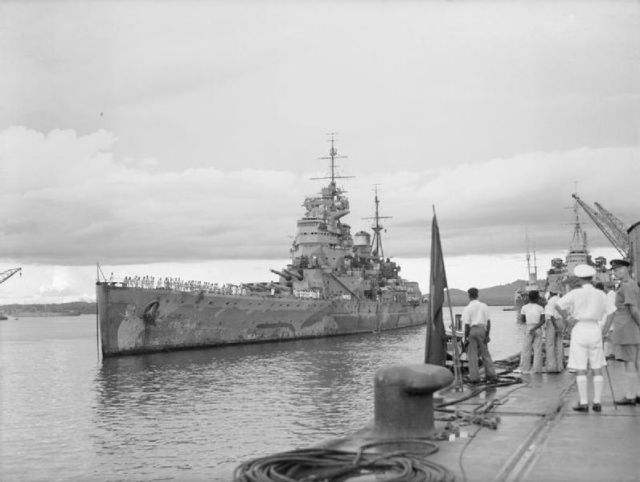On the very first day of the Pacific War, December 8, 1941, Lieutenant-General Tomoyuki Yamashita’s 25th Imperial Japanese Army launched an amphibious assault on the Malay Peninsula. The Japanese forces held only a slight advantage in numbers on the ground in northern Malaya. However, they were significantly superior in close air support tactics due to experience these Japanese units had gained in China. Supported by light tanks the Japanese forces moved south from Thailand on 11 December 1941. The Allies had no tanks, which had put them at a severe disadvantage.
The Japanese also used bicycle infantry, which allowed swift movement of their forces overland, the bicycles forcibly commandeered from the civilian population by the invading troops . This rapid inland advance of the Japanese from their Kota Bharu beachhead on the north-east coast of Malaya simply overwhelmed the British and Indian northern defences.
To counter this, Royal Navy ‘Force Z was sent north on December 10, 1941, to intercept and destroy the Japanese invasion fleet’. They were attacked by Japanese land based bombers releasing torpedoes at the battleship HMS Prince of Wales and battlecruiser HMS Repulse. Both capital ships were sunk, leaving the east coast of Malaya exposed to Japanese landings. Now left without any real naval presence, the British were unable to challenge any further Japanese naval operations off the Malayan coast, a situation that proved invaluable to the invading army. With virtually no opposing Allied fighters, the Japanese also had air superiority, enabling them to raid the Allied ground troops and carry out frequent, systematic air attacks against military targets as well as the civilian population.
On December 17, 1941, the island of Penang was abandoned. Because of the hasty evacuation, a considerable amount of arms, boats, supplies and a working radio station were left behind to fall into Japanese hands. Europeans were nearly all evacuated from Penang, while local inhabitants were being left to the mercy of the Japanese, a situation which caused much embarrassment for the British and alienated them from the local population.
By the end of the first week in January, the entire northern region of Malaya had been lost to the Japanese. The Japanese army’s next objective, the city of Kuala Lumpur, was entered and occupied unopposed on January 11, 1942.
By mid-January 1942 the bloodiest battle of the Malayan campaign, the battle of the Muar River near Gemas, was fought by the Australian 8th division and Indian Army units. Though the Australians were equipped with anti-tank weapons, they were unable to stem the Japanese tide. Suffering over 3000 casualties the Commonwealth troops were forced to retreat to the south. Additional Japanese troops landed on the coast near Endau and attacked the Commonwealth troops. These were driven back towards Singapore, due to the lack of static defense structures .The Commander in Chief Malaya Command, Lieutenant-General Arthur Percival, had forbidden to build them because they were “…bad for morale…” On January 31, the last Commonwealth soldiers left Malaya for the Island of Singapore. Two weeks later, on February 15, the fortress surrendered.

Lt.-General Arthur Percival, under a flag of truce, on his way to the Singapore surrender ceremony on Feb. 15 1942
In less than two months, the Battle for Malaya had ended in comprehensive defeat for the Commonwealth forces and their retreat from the Malay Peninsula to the fortress of Singapore. Nearly 5,000 Commonwealth troops had been killed or wounded during the battle for Malaya. And over 80.000 of them were captured at the surrender of Singapore…





Interesting article. My father was in the fighting for Muar a member of the 2/29th battalion of the Australian 8th division. He was wounded in this battle, evacuated to Singapore and escaped from the hospital after it had been bombed, a couple of days before Singapore capitulated.
LikeLike